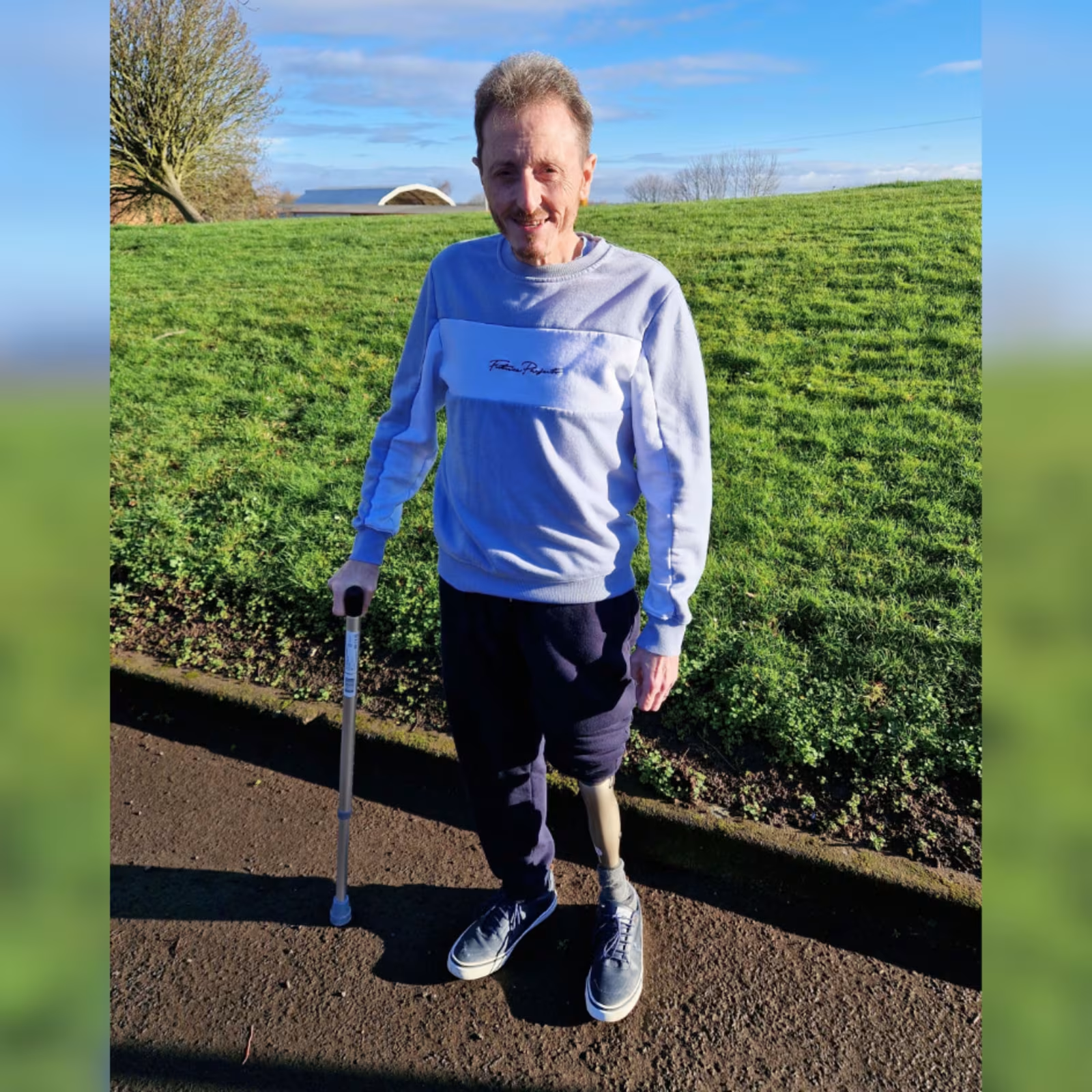
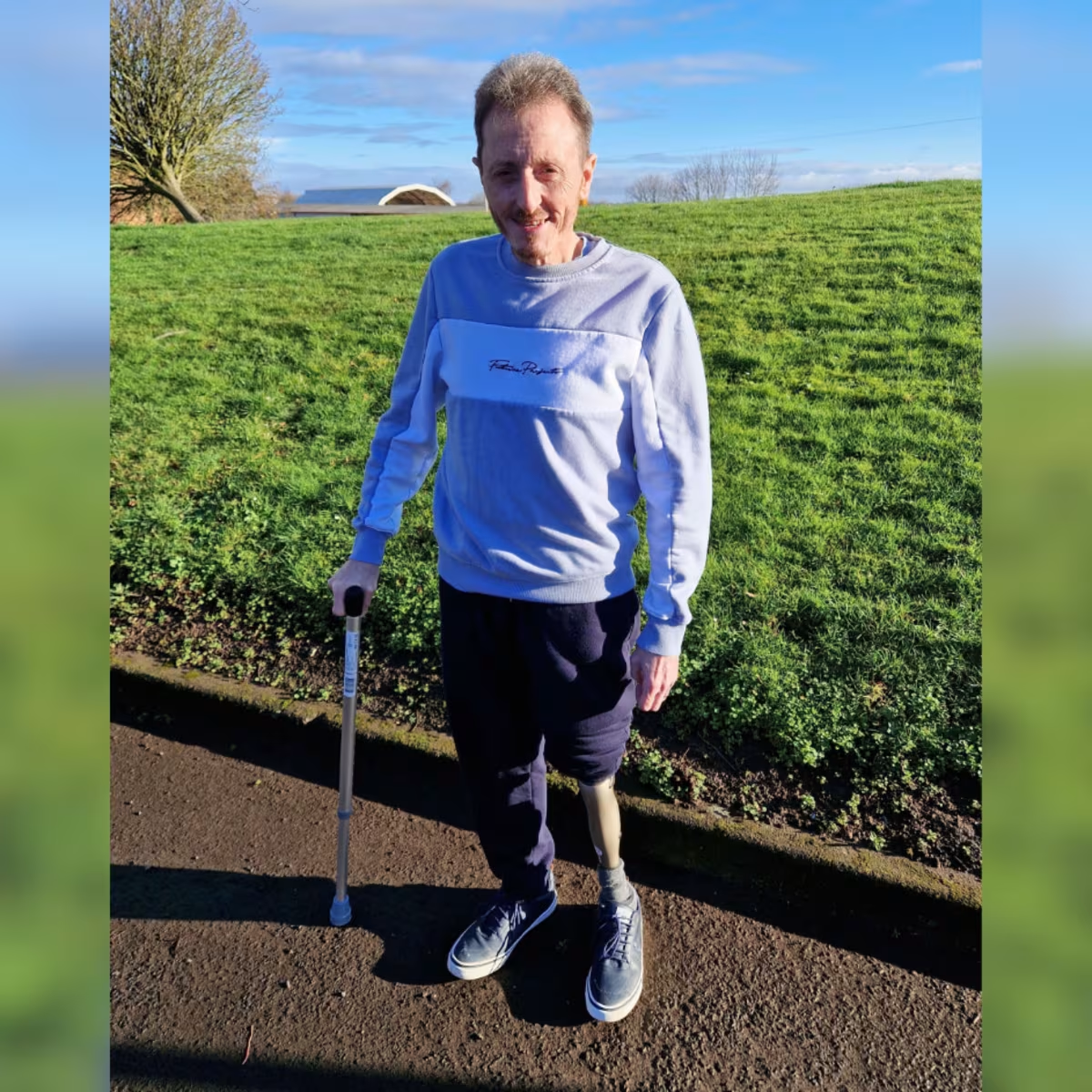
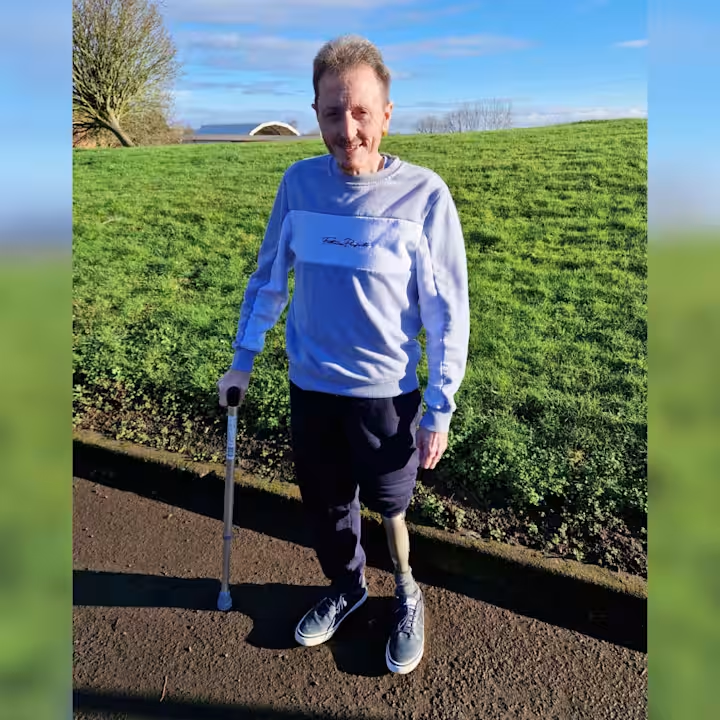
Peter's Kenevo Story.
Amputee father of ten, sets his sights on walking his daughter down the aisle thanks to “life-changing” microprocessor knee.
Peter, 58, was used to spending long hours on his feet working as a hair stylist before he started to suffer with lymphoedema, a long-term chronic condition that causes swelling in the body’s tissues.
Following a car accident in 2014 his condition worsened, and he experienced repeated ulcers in his leg which frequently led to life-threatening encounters with Sepsis. Peter began spending more and more time in hospital and when he wasn’t receiving medical treatment, he was reliant on crutches and a wheelchair to get around.
For more than 5 years Peter was unable to walk unaided and suffered from constant pain in his leg, leaving Peter with the feeling that the best solution for him would be to have his leg amputated. So, in the autumn of 2023, Peter’s medical team agreed that an amputation was the only solution and he underwent a through knee amputation of his left leg.
Following his amputation, Peter began his rehab using a Femurett (early walking prosthetic aid). During his initial six-week rehabilitation he mastered walking with a free knee out of parallel bars and was also competent at going up and down stairs. Due to the progress he made within the first few weeks of his rehab, it was recommended that Peter’s first (primary) prosthesis be a microprocessor knee (MPK).
The benefits of using a MPK include a reduced number of stumbles and falls, increased confidence whilst walking, improved balance, improved gait and reduced energy expenditure when walking*. Within the NHS it is usually more common for MPKs to be provided to patients who have been established on a prosthesis for more than 12 months. With the introduction of the NHS MPK Policy amputees can have access to a MPK as their very first prosthesis. Using a MPK as the primary prosthesis has the added benefits of reducing long standing gait deviations which are typically seen in established patients using non-MPKs and potential musculoskeletal conditions related to these.
With this in mind, Peter was prescribed the Kenevo microprocessor knee, “I felt confident on the Kenevo as soon as I started using it” said Peter. “I had a lot of falls both before and immediately after my amputation, but I’ve never fallen on the Kenevo. There were a few times in the first couple of weeks using the Kenevo where I stumbled and I could actively feel the knee stopping me from falling. I feel very safe on this knee, it helped me to become more confident in mastering slopes and stairs.”
The Kenevo has various safety features which are proven to reduce falls. These include Stumble Recovery Plus, this feature covers the entire swing phase, providing the highest level of safety possible. The difference between a stumble and fall can take milliseconds. Unlike other MPKs, the Kenevo does not need to detect a stumble in order to provide the additional support. Instead, the knee is already prepared on every swing phase for a stumble, therefore there is no reaction time and the risk to the user is reduced even further. If a stumble was to occur as the knee is extending, the stance resistance is already very high preventing the knee from bending further when the user lands on it following a stumble.
The Kenevo also provides the greatest possible safety while standing, regardless of the selected activity mode. In activity modes A and B, safety is provided by the locked stance phase. The stance phase refers to the moments where you stand on the floor with the prosthesis. In the more dynamic activity mode C, stable standing is possible even with the knee flexed, thanks to the intuitive stance feature.
“I found it so easy to use” Peter said about the Kenevo, “the right mode was set up for me so I just put it on and go, without having to think about the technology, which means I can give all my focus to learning to walk again.”
Four months after his amputation, Peter is already looking toward the future. “I used to love going on holiday with my family, but I haven’t done that for a long time. I felt too vulnerable to go away with them and I didn’t want to have to rely on a wheelchair and someone for assistance,” Peter said. His confidence and self-esteem have improved so much in just a short period of time that his children decided to book a cruise for Peter and his wife. “I’m really looking forward to going away and hope that this will be the start of many family holidays.” And there is another amazing milestone that Peter is looking forward to this year, walking his daughter down the aisle.
“It’s a scary world going into an amputation, you don’t know what to expect. I’m so thankful that I got the opportunity to go straight onto a microprocessor knee, it has already given me so much independence.” Peter concluded, “I don’t know what I’d do without it now!”
* Stevens, PM, Wurdeman, SR. Prosthetic knee selection for individuals with unilateral transfemoral amputation: a clinical practice guideline. J Prosthet Orthot 2019; 31: 2–8.
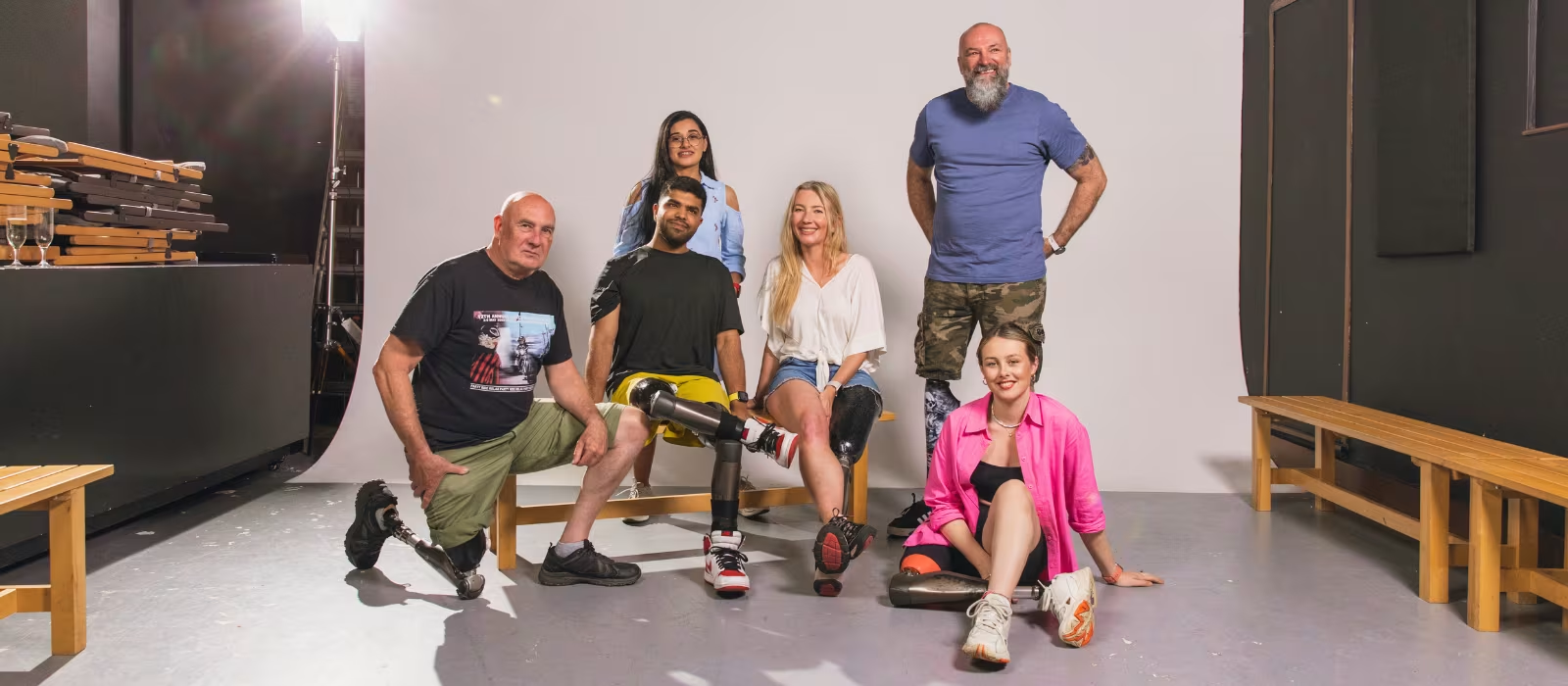
Available via NHS Funding

Discover the Kenevo
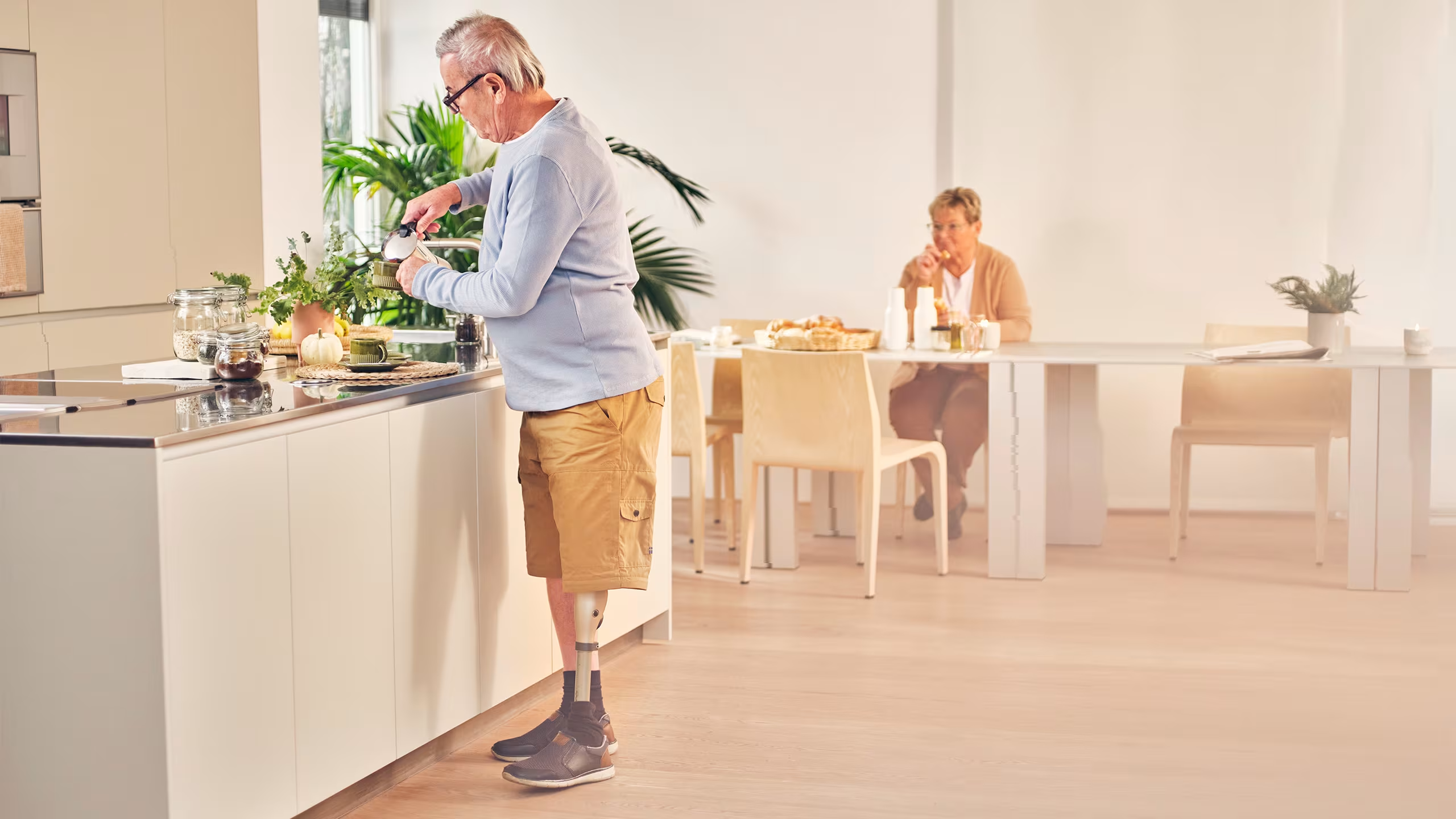
Living with Amputation
3 results out of 3